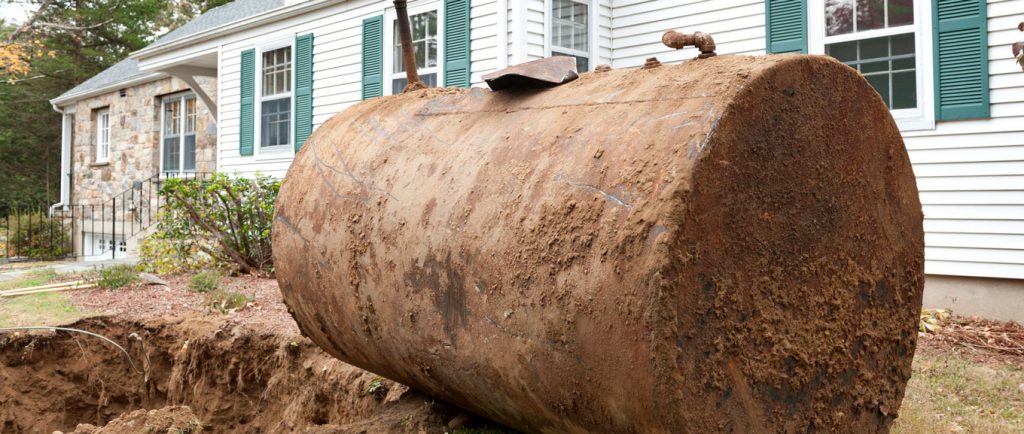
All industrial oil tanks and residential oil tanks in Canada must be registered and meet current regulations. For example, if a tank exceeds 25 years or is of an unknown age, fuel suppliers are not permitted to fill the tank.
If you have an oil tank that is no longer in use, you are also required to have it removed by a professional such as Waterline Environmental, who can dig it out (if underground), remove any existing oils, and expertly test the surrounding soil for leaks and contamination.
The Risks of Soil Contamination
With underground tanks, many home and business owners don’t realize that they have been living or working on top of a tank that has cracked, rusted, and contaminated the ground beneath them.This is concerning as oil can impact soil quality, the health of your family and neighbours, and prevent the resale of your property.
If you suspect you have an oil tank on your property, the team at Waterline Environmental can visit your site location, provide a firm quote for your oil tank removal, and locate all services required, prior to excavation. The Waterline team will also perform a thorough soil analysis, verified by a Geoscientist.
Learn more about why a soil analysis is crucial for your property following tank removal:
1. Protecting The Environment
If you have located an old above ground or underground oil tank on your residential or industrial property, removal and soil analysis is crucial for ensuring the earth beneath you is not further poisoned and the environment is protected.
If your tank is successfully removed, and your soil analysis comes back clear, all is good! However, if the soil analysis determines that the soil has a higher part per million (ppm) than the Ministry of Environment guidelines permit, the soil will need to be removed and transported to a registered receiver for remediation.
To learn more about Waterline’s remediation process, please visit our Soil Remediation page.

2. Conserve Energy & Money
Don’t wait for costly clean up! If you are in need of an oil tank removal and soil testing, it’s important to move quickly before the situation becomes increasingly complex. The more severe the removal and testing situation, the more costly and demanding the oil tank removal process can become.
Call Waterline to set up your inspection and quote.
3. Crop Optimization
Soil testing is also essential for those looking to optimize plant culture on their farm or in your garden after an oil tank is removed. If the soil surrounding your tank is contaminated, plants may not grow, they can die, cause harm to those ingesting them, or grow with abnormalities.
Oil tank or not, testing your soil is always a good idea when it comes to crop growth.

4. Protecting Yourself & Your Neighbours
When it rains, contaminated soil can run into your home, your garden, throughout your yard, and into your neighbour’s properties. Contaminated soil can cause issues through:
- Direct contact
- Ingestion (water, food)
- Inhalation
5. Re-Selling Your Home
Having contaminated soil from an oil tank will prevent you from being able to sell your home or property as specific government regulations demand secure soil samples following tank removal.
The report generated by your soil analysis must be signed by the attending P. Geo and meet all MOE&E, CSA, and TSSA code requirements. With Waterline Environmental, your test results will be returned with accuracy and reliability.
Understanding The Process of Soil Remediation
If your soil analysis determines that your soil is indeed contaminated, it is mandatory that remediation occurs to restore the site to its natural, healthy state.
- When an oil tank is expertly removed, a perimeter analysis of the tank is taken.
- Once the level of contamination has been estimated, workers dig the contaminant out completely.
- The contaminant is placed in a lined, leak-free bin.
- Once excavated, additional samples of the sides and bottom of the hole are taken.
If the site complies with environmental regulation criteria, the hole can be filled and reported as having met all requirements.
However, if the site fails testing, additional soil remediation may be required to meet mandatory regulations.